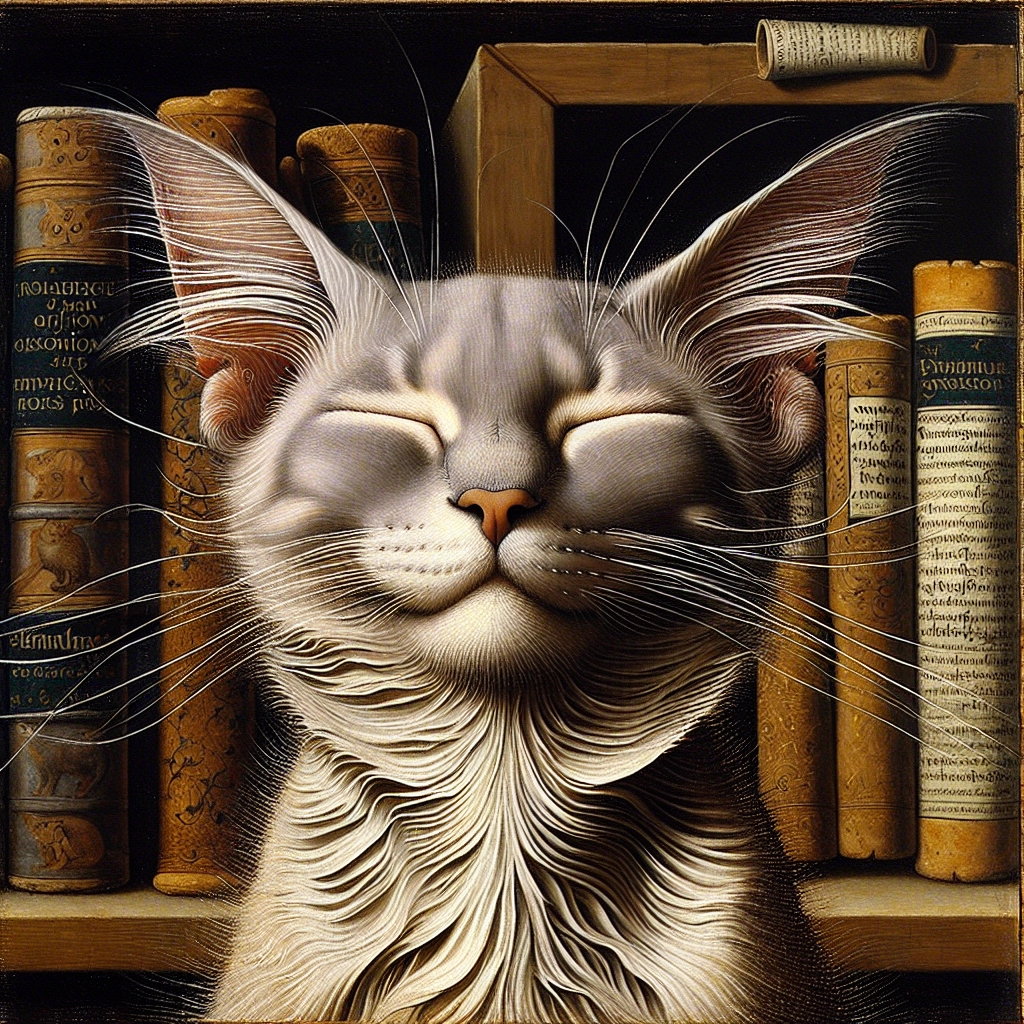
- Published on
- Authors

- Name
- ric de yuga 😄
🐱 The Mystery of Cat Purring: Why Do Cats Purr? 🐱
Purring is one of the most soothing and comforting sounds that cats make. Whether they're nestled on your lap, greeting you at the door, or even at the vet's office, the gentle vibration of a cat's purr can bring a sense of calm and joy. But why do cats purr? Let's explore the fascinating reasons behind this unique feline behavior and the science that explains it.
🔬 The Science of Purring 🔬
Purring is produced by the rapid contraction and relaxation of the muscles within a cat's larynx (voice box). This movement causes the vocal cords to separate and vibrate as the cat inhales and exhales, creating the distinctive purring sound.
The purring sound is created through a unique combination of the cat's vocal cords and the muscles of the larynx and diaphragm. When a cat breathes in and out, the air passes over the vocal cords, causing them to vibrate rapidly – up to 150 times per second! At the same time, the muscles of the larynx and diaphragm contract and relax in a consistent pattern, contributing to the distinct purring sound we know and love.
🧠 The Reasons Behind Purring 🧠
❤️ Contentment and Relaxation:
- Comfort and Happiness: One of the most common reasons cats purr is to express contentment and relaxation. When your cat curls up on your lap and purrs, it's a sign that they feel safe, comfortable, and happy. This purring is often accompanied by other signs of contentment, such as kneading, slow blinking, and a relaxed posture.
🩹 Healing and Pain Relief:
Self-Soothing: Cats also purr when they are in pain or distress, such as during illness or after an injury. Purring is thought to have a self-soothing effect, helping to reduce pain and stress. The low-frequency vibrations produced during purring may help to promote healing and provide a sense of comfort to the cat.
Healing Vibrations: The vibrations produced during purring have been found to promote healing. The frequency of a cat's purr (between 25 and 150 Hertz) is known to have therapeutic effects, such as promoting bone growth and healing tissues. This may explain why cats seem to recover more quickly from injuries and surgeries compared to other animals.
🐾 Communication:
Mother-Kitten Bond: Kittens begin to purr shortly after birth, and this behavior helps them communicate with their mother. The mother cat purrs to reassure her kittens, and the kittens purr to signal that they are content and receiving enough milk. This early purring helps to establish a strong bond between the mother and her kittens.
Social Interaction: Adult cats may purr to communicate with other cats or humans. For example, a cat might purr to signal that they are friendly and non-threatening or to seek attention and care from their human companions. Purring can be a way for cats to initiate social interaction and strengthen their bonds with others.
🍽️ Hunger and Requests:
- Solicitation Purring: Some cats develop a specific type of purr known as the "solicitation purr," which they use when they want something, such as food. This purr is often higher-pitched and more urgent, designed to grab the attention of their human caregivers. The solicitation purr may be accompanied by other attention-seeking behaviors, such as meowing or rubbing against their human's legs.
🌍 The Universal Language of Purring 🌍
Purring is a versatile and multifaceted behavior that serves various functions in a cat's life. From expressing contentment and facilitating healing to communicating with others, purring is a vital part of a cat's repertoire.
Purring is not just limited to domestic cats; other members of the feline family, such as cheetahs and pumas, also purr. However, big cats like lions and tigers do not purr in the same way. Unlike other vocalizations, cats can purr continuously while both inhaling and exhaling, allowing them to maintain the soothing sound for extended periods.
🌟 The Comforting Sound of Purring 🌟
Purring is one of the many ways cats enrich our lives with their presence. Whether they're expressing contentment, seeking comfort, or communicating with us, the gentle hum of a cat's purr is a reminder of the unique bond we share with these incredible animals.
The sound of a cat's purr has the power to melt hearts, ease stress, and create an instant bond between feline and human. Despite the scientific explanations behind purring, there's still an undeniable sense of magic and mystery surrounding this enchanting feline vocalization.
Next time your cat curls up beside you and starts to purr, take a moment to appreciate the multifaceted reasons behind this behavior. Let's celebrate the beauty of purring and the fascinating science that explains why our feline friends make this comforting sound. Embrace the mystery and magic of the purr, and cherish the deep and ancient connection we share with these captivating creatures. 🐱❤️
